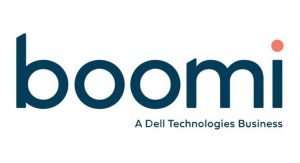One of the most pressing IT issues in most agencies is the concept of technical debt, with agencies continuing to be constrained by their reliance on outdated legacy systems. They would like to wipe out that debt by adopting more modern platforms, but they struggle to make that transition. How can they bridge that gap between legacy systems and modern platforms?
That’s where the concept of integration platform-as-a-service (iPaaS) comes in. iPaaS is a cloud-based service that integrates applications, data and processes across different cloud and on-premise platforms. Although iPaaS might be new to many agencies, it has been in use in the commercial sector for more than a decade.
To learn about iPaaS, GovLoop spoke with Alan Lawrence, Vice President for Federal at Boomi, a Dell Technologies company. Lawrence identified three key use cases for iPaaS.
Rationalizing, consolidating applications
When it comes to modernization, agencies understand the need for application rationalization – that is, taking stock of their existing applications and determining which still deliver value and which should be consolidated or simply shut down. The challenge is to ensure that critical data is not lost in the process.
That’s where iPaaS comes in. iPaaS ensures a smooth transition with reliable data exchange between the original application and the new platform. With iPaaS, “you can actually decommission a whole crate of applications, taking the time you spent on maintenance and moving it to something else,” Lawrence said.
Because iPaaS is cloud-based, FedRAMP authorization is a must. With FedRAMP-based security, agencies can integrate data in a trusted and secure environment that supports data quality, governance and compliance.
Accelerating the move to the cloud
Increasingly, agencies are choosing to move applications from a legacy system to a cloud platform. Traditionally, that would require an intensive, drawn-out effort by programmers to map out all the different points of integration. But with iPaaS, that’s not the case.
Boomi’s iPaaS platform, for example, includes an algorithm driven by artificial intelligence that suggests how to handle complex data mapping, which is a critical but often timeconsuming part of integration configuration. From Boomi’s experience, the algorithm is 92% accurate – meaning that the IT staff can focus on addressing the remaining 8%, Lawrence said.
The platform also provides a low-code, drag-and-drop interface that is designed to be used by the “business” owners, who have the best understanding of operational requirements, he said.
Connecting with outside services
Another challenge is moving data from an on-premises system to a cloud-based one – for example, from SAP to SAP Hana, Remedy to ServiceNow, or PeopleSoft to WorkDay – with data transformation required in the middle.
Agencies often have to start from scratch when they make that first transition, because the original data integration was done 20 or 25 years ago and was never documented. An iPaaS provides a fresh start. As the new data integration is designed, the platform captures it in a Visio-like diagram.
“You end up with a diagram of literally every integration you’re doing – where the data is coming from, where it is going and what is happening to it in the middle,” Lawrence said.
This article is an excerpt from GovLoop’s recent report, “Your Guide to Mission-Driven Cybersecurity.” Download the full report here.






Leave a Reply
You must be logged in to post a comment.